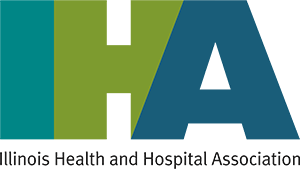Discount and Cap FAQs
As your trusted resource, IHA has answered frequently asked questions about the discount and cap outlined in the Hospital Uninsured Patient Discount Act.
How is the 135% of cost discount calculated?
For charges in excess of $300, the discount is calculated as the difference between the charges for the uninsured patient and 135% of cost, using a total cost-to-charge ratio from the hospital’s most recently filed Medicare cost report, Worksheet C Part I.
Why does this law derive the cost-to-charge ratio from the Medicare cost report?
The cost-to-charge ratio is calculated in the same manner as the cost-to-charge ratio under the Illinois Community Benefits Act to reduce charity charges to charity cost. While the Medicare cost report does not capture the entirety of a hospital’s costs and charges, it provides a public, administratively simple and easily verifiable calculation of a cost-to-charge ratio. Hospitals must annually file a copy of Worksheet C with the Attorney General’s office.
How are assets considered when applying the 25% cap?
A patient who is determined to be eligible for the discount may also be eligible for the 25% cap if they do not have assets exceeding a value of 600% of the federal poverty level (FPL) or 300% of FPL at Critical Access Hospitals (CAHs) and rural hospitals. Certain assets are exempt from consideration: the family’s primary residence, amounts held in pension or retirement plans and certain personal property listed in Section 12-1001 of the Code of Civil Procedure.
For the purposes of the 25% cap, when does the 12-month period begin?
Hospitals cannot collect more than 25% of an uninsured patient’s family gross income in any 12-month period. The 12-month period begins on the date of service for which the hospital first determines the patient is eligible for the discount. Thereafter, for any subsequent hospital services, the patient must inform the hospital that he or she received a discount and continues to be eligible for the discount.
Does the hospital need to coordinate with other providers for purposes of the cap?
No. The cap is applicable to the services provided at an individual hospital. The hospital does not need to include services provided at other facilities.
Can the discount be treated as charity care?
This law does not change how charity care is determined and accounted for. A patient eligible for the discount may also be eligible under the hospital’s charity policy and therefore any charges foregone may be considered charity charges. A hospital should examine its charity policy within this context, to determine if the discounts and caps required under this law should be incorporated into the hospital’s charity policy.
Can a hospital provide the discount without verifying the patient’s eligibility?
Yes. A hospital may always be more generous in the provision of financial assistance, if it chooses. This law sets out minimum requirements. However, discounts that are not based on a patient’s ability to pay (e.g., income) cannot be considered charity for accounting purposes.
Can other payers use the discount in this law to argue it is a hospital’s “usual and customary” rate?
No, there is specific language in the law prohibiting such claims. Section 20 states:
“Nothing in this Act shall be used by any private or public health care insurer or plan as a basis for reducing its payment or reimbursement rates or policies with any hospital. Notwithstanding any other provisions of law, discounts authorized under this Act shall not be used by any private or public health care insurer or plan, regulatory agency, arbitrator, court, or other third party to determine a hospital’s usual and customary charges for any health care service."

